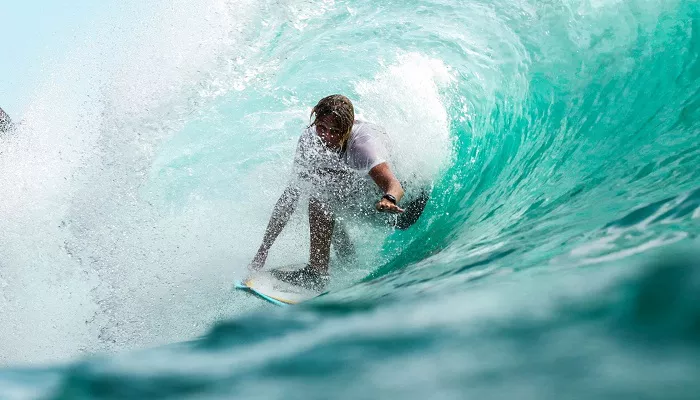Emotions and urges can often feel like powerful waves crashing over us, threatening to pull us under. Whether it’s the impulse to indulge in unhealthy habits, react angrily, or give in to cravings, these urges can be overwhelming. But what if there was a way to ride these waves instead of being drowned by them? This is where the concept of urge surfing comes into play—a mindfulness-based technique that teaches us to observe our impulses without acting on them.In this article, we will explore what urge surfing is, how it works, and why it can be a transformative tool for emotional regulation. By understanding the mechanics behind this practice, you can learn to navigate even the strongest emotional currents with grace and resilience.
Understanding Urge Surfing: The Basics
Urge surfing is a mindfulness technique rooted in acceptance and commitment therapy (ACT) and mindfulness-based relapse prevention (MBRP). The core idea is simple: instead of suppressing or giving in to an urge, you observe it as if it were a wave—rising, peaking, and eventually fading away.The term itself is a metaphor. Just as a surfer rides ocean waves without fighting them, you can learn to “ride” your urges without being overpowered. This approach is particularly effective for managing cravings, emotional outbursts, and impulsive behaviors.
How Urge Surfing Differs From Suppression?Many people try to suppress their urges, believing that ignoring them will make them disappear. However, research shows that suppression often backfires, making the urge stronger. Urge surfing, on the other hand, involves acknowledging the sensation without resistance.Suppression leads to tension and increased distress,surfing allows the urge to pass naturally,bying, shifting your mindset from control to observation, you reduce the power that urges hold over you.
The Science Behind Urge Surfing: Why It Works
To fully grasp why urge surfing is effective, it’s important to understand the psychological and neurological mechanisms behind it.
The Role of Mindfulness: Mindfulness—the practice of staying present without judgment—is the foundation of urge surfing. When you observe an urge mindfully, you activate the prefrontal cortex, the part of the brain responsible for self-regulation. Meanwhile, the amygdala, which triggers fight-or-flight responses, becomes less dominant.This shift in brain activity helps you respond rather than react to urges.
The Temporary Nature of Urges: A key principle of urge surfing is recognizing that all urges are temporary. Studies show that most cravings and emotional impulses peak within 10 to 20 minutes before subsiding. By riding out this wave, you avoid impulsive decisions that you might later regret.
How to Practice Urge Surfing: A Step-by-Step Guide
Now that we’ve explored the theory behind urge surfing, let’s break down how to apply it in real-life situations.
Recognize the Urge: The first step is simply noticing that an urge is present. Instead of ignoring it or acting on it immediately, pause and name it:”I’m feeling the urge to snack unnecessarily.” “I have an impulse to check my phone obsessively. ” This act of labeling creates a small but crucial mental distance between you and the urge.
Observe Without Judgment: Once you recognize the urge, shift into observer mode.Ask yourself:”Where do I feel this in my body?” (e.g., tension in the chest, restlessness in the hands)”What thoughts are coming with it?”Avoid labeling the urge as “good” or “bad.” Simply witness it as a passing sensation.
Ride the Wave: Now, imagine the urge as a wave. Visualize it:
- Rising (the intensity increases)
- Peaking (it reaches its strongest point)
- Fading (it loses strength and dissolves)
Remind yourself: “This will pass. I don’t have to act on it.”
Engage in Alternative Actions: While waiting for the urge to fade, redirect your focus.You might:
Take deep breathsEngage in a brief meditation
Move your body (stretch, walk)
This helps reinforce the idea that you are not your urges—you have the power to choose your response.
The Benefits of Urge Surfing: Why It’s Worth Mastering
Urge surfing isn’t just about resisting temptation—it’s about building emotional resilience. Here’s why this practice is so valuable:
Reduces Impulsive Behavior: By learning to pause before acting, you make more intentional choices. This is especially helpful for:
- Managing cravings (food, smoking, alcohol)
- Controlling emotional reactions (anger, anxiety)
Enhances Emotional Regulation: Urge surfing strengthens your ability to tolerate discomfort without escaping it. Over time, this leads to greater emotional stability.
Promotes Self-Compassion: Instead of criticizing yourself for having urges, you learn to accept them as natural. This fosters a kinder, more patient relationship with yourself.
Conclusion
Urge surfing transcends being merely a coping mechanism—it’s a transformative practice that reshapes how we engage with life’s inevitable challenges. At its core, this technique invites us to meet our impulses not with resistance or surrender, but with mindful curiosity. When we truly internalize that urges, no matter how intense, are fleeting experiences rather than commands we must obey, we reclaim our power to respond rather than react.
The beauty of urge surfing lies in its elegant simplicity. Instead of exhausting ourselves by fighting waves of emotion or giving in to them impulsively, we learn to observe them with detachment. We notice the physical sensations, the rising tension, the mental chatter—and then we let them pass, like watching a wave build, crest, and dissolve back into the ocean. With each practiced moment of non-judgmental awareness, we strengthen our capacity to endure discomfort without being controlled by it.So the next time you feel that familiar surge of craving, anxiety, or frustration, pause and remember: you are not your urges. You are the surfer, not the wave. With your breath as your anchor and awareness as your board, you have everything you need to navigate these temporary currents. The question isn’t whether the waves will come—they always do—but whether you’re ready to meet them with openness and skill. The ocean of your mind is vast, unpredictable, and full of potential. Will you dive in?

